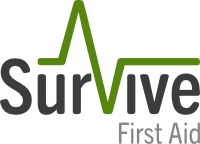Guideline 9.4.3 – Envenomation from Tick Bites and Bee, Wasp and Ant Stings

Who does this guideline apply to?
This guideline applies to adults, children and infant victims.
Who is the audience for this guideline?
This guideline is for use by bystanders, first aiders and first aid providers.
1 Introduction
Single stings from a bee, wasp or ant, while painful, seldom cause serious problems except for persons who have an allergy to the venom. Multiple insect stings can cause severe pain and widespread skin reaction. Stings around the face can cause serious envenomation and difficulty breathing even if the person is not known to be allergic.
It is important to remember that bee stings with the venom sac attached continue to inject venom into the skin, whilst a single wasp or ant may sting multiple times.
Ticks can inject a toxin that may cause local skin irritation or a mild allergic reaction, however most tick bites cause few or no symptoms.
In susceptible people tick bite or other bites/stings may cause a severe allergic reaction or anaphylaxis, which can be life threatening. This can also occur in victims with no previous exposure or apparent susceptibility.
2 Recognition
Symptoms and signs may include:
2.1 Minor
- Immediate and intense local pain.
- Local redness and swelling.
2.2 Major/Serious
- Allergic reaction/anaphylaxis ANZCOR Guideline 9.2.7 First-Aid Management of Anaphylaxis.
- Abdominal pain and vomiting in the case of allergic reaction to insect venom ANZCOR Guideline 9.2.7 First-Aid Management of Anaphylaxis.
Airway obstruction may result from swelling of the face and tongue due to anaphylaxis, or from insect stings in or around the mouth. This may occur immediately or over several hours and always requires urgent medical care.
3 Management
- If the victim is unresponsive and not breathing normally, commence resuscitation, follow ANZCOR Guideline 8: Cardiopulmonary Resuscitation.
- If the victim has signs of anaphylaxis, follow ANZCOR Guideline 9.2.7 First-Aid Management of Anaphylaxis.
- In the case of a bee sting, remove the sting, by any means, as quickly as possible.1,2
- In the case of tick bite, if there is no history of tick allergy, immediately remove the tick.3
- If the victim has a history of tick allergy, the tick must be killed where it is, rather than removed.3
- If in a remote location, consultation with healthcare professionals is recommended.
- Move victim to a safe place.
- Apply a cold compress to help reduce pain and swelling.
- Monitor the victim for signs of allergic reaction (difficulty speaking, breathing difficulties, collapse and generalized rash).
- Refer the victim to hospital if sting is to the face or tongue.
Instructional information regarding auto injectors can be accessed from the Australian Society of Clinical Immunology and Allergy’s (ASCIA) webpage: http://www.allergy.org.au/health professionals/anaphylaxis-resources.
Instructional information regarding killing and removing ticks can be accessed from the web link: Tick-induced Allergies Research and Awareness (TiARA) http://www.tiara.org.au
Acknowledgements
Australian Society of Clinical Immunology and Allergy (ASCIA)
Further Reading
ANZCOR Guideline 8: Cardiopulmonary Resuscitation
ANZCOR Guideline 9.2.7 First-Aid Management of Anaphylaxis
References
- Australian Society of Clinical Immunology and Allergy (ASCIA) Allergic Reaction to Bites and Stings: http://www.allergy.org.au/patients/insect-allergy-bites-and-stings/allergic-reactions-to- bites-and-stings?highlight=WyJiZWUiXQ== Accessed 19 September 2016
- Visscher PK, Vetter RS, Camazine S. Removing bee stings. Lancet 1996; 348 :301-02.
- http://www.tiara.org.au/how-to-remove-a-tick/ Accessed 24 July 2018
